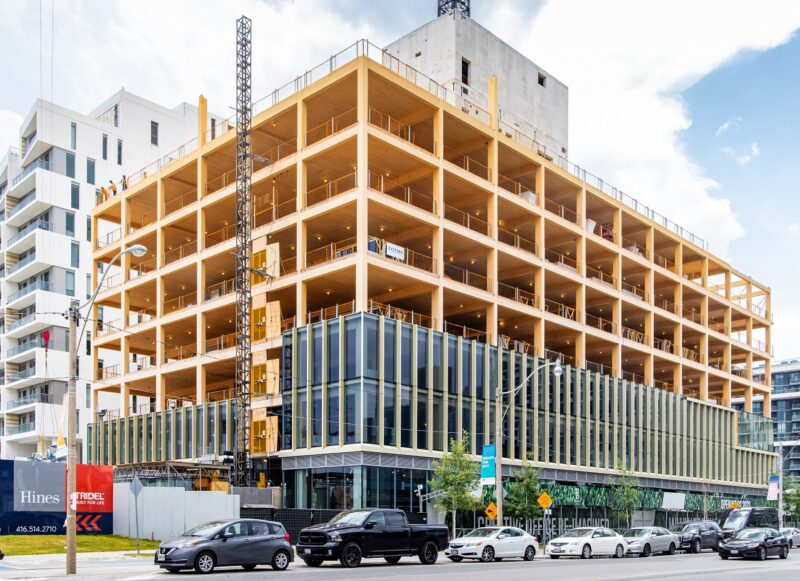Published: 17/09/24 By: Mike Bekin
By 2050, it is expected that 7 out of 10 people will live in cities, doubling the current figure of just over 55% of the global population. But with cities also accounting for around 70% of global emissions, this is not good news for the planet. How will we balance an expanding population with global goals to reduce emissions, while keeping everyone in suitable housing?
One solution is timber cities, and they could be the answer to helping to ensure the drastic improvement we need to make to the sustainability of the way we live. Let’s take a closer look.
What Are Timber Cities?
The idea of timber cities is actually pretty straightforward: rather than building from steel or concrete, all future homes and premises will be made from timber.
Simple enough, right?
Timber cities would indeed not be composed of Tudor-style buildings! The research looks at 12-storey mid-rises entirely built from wood, creating plenty of sustainable housing without requiring a lot of ground space.
What About Fire Safety?
The first question which frequently crops up when discussing timber cities is the aspect of fire safety. If the Great Fire of London is already at the forefront of your mind, you are not alone! However, timber buildings are not necessarily a fire risk – just take a look at Scandinavia. Around 90% of single-family homes built in Sweden are constructed from timber, and the Swedish have no special problems with fire.
There are plenty of modern solutions to reduce the risk of fire in timber buildings, including fire-resistant coatings.
We at EcoChoice often provide our clients with external timber cladding treated to the Euro Class B fire rating. This can be applied to a multitude of species, including Cedar, Larch, Douglas Fir and ThermoWood.
How Will Timber Cities Help Our Environment?
With an increasing global population, new homes are inevitable. However, the carbon footprint associated with them does not have to be.
The premise of building from timber would drastically reduce the emissions generated from the construction of new homes, and could even cut 100 billion tonnes of carbon dioxide emissions by 2100, helping keep temperature increases below 2℃.
Timber cities would increase the need for new timber growth. With a higher demand for timber, planting new trees would become more profitable and the sustainable timber industry could see a boom, helping shine the light on the importance of protecting our world’s natural forests.
However, preventing timber cities from having the opposite effect on the sustainability of timber farming is crucial. A spike in demand cannot lead to an increase in illegal logging. If that happens, the whole concept of sustainability surrounding timber construction would fall apart.
The Importance of Sustainable Timber Forestry
At EcoChoice, we have always been vocal in our support for responsible, eco-conscious timber. As governments begin looking further into the potential of timber cities to help reach net zero targets, they need to focus on championing responsibly harvested timber.
In independently certified sustainable forests – such as those we work with – key principles ensure that the use of timber continues to have a positive impact on the planet. These include:
- Never overharvesting from a space or species
- Replanting trees which are felled and allowing the landscape to regenerate naturally
- Encouraging biodiversity
Sustainable, responsible timber forests are about allowing life to thrive while providing renewable, green building materials for our planet.
Learn More at EcoChoice
Our team of timber experts know everything there is to know about sustainable timber. If you have a question about independently certified forests, or about choosing the right timber for your project, we can help. Get in touch today and let’s make the world a greener place.
Tags: timber cities
Categories: Insights
